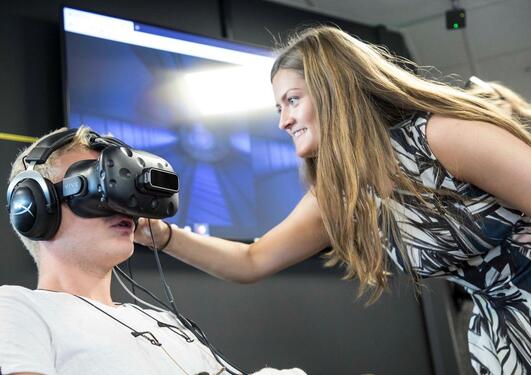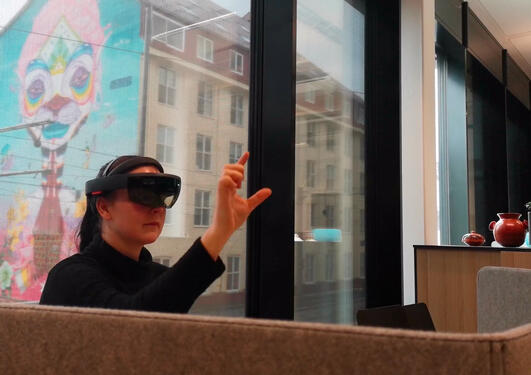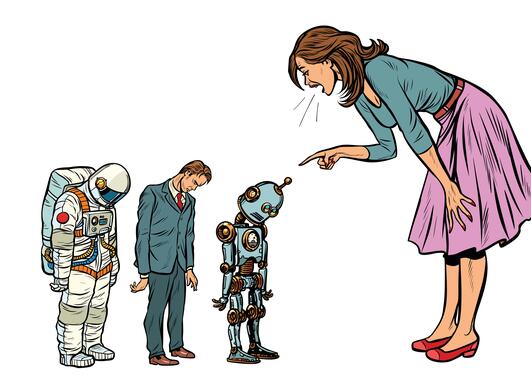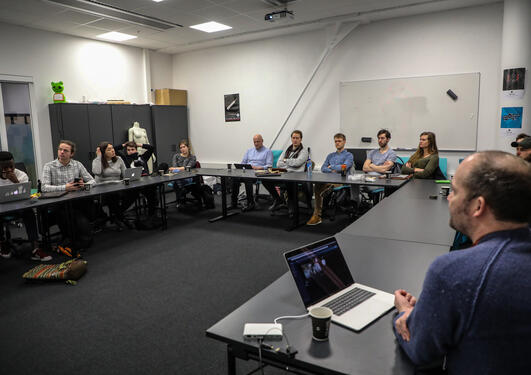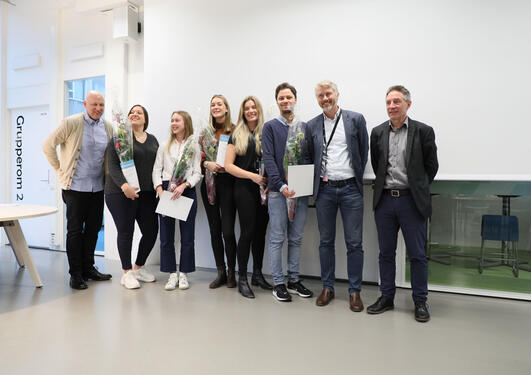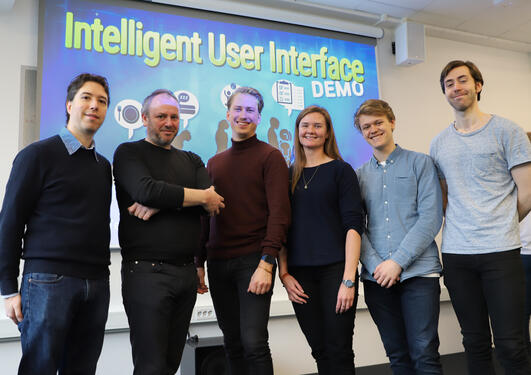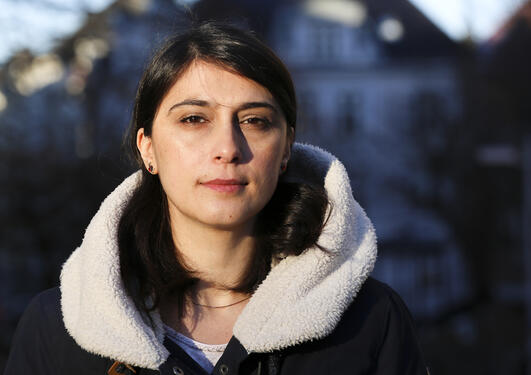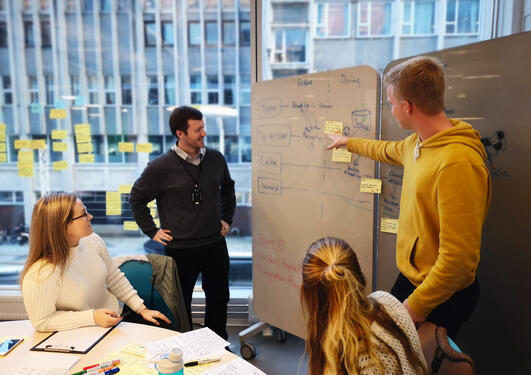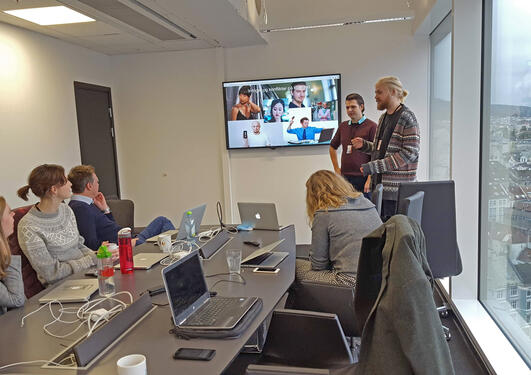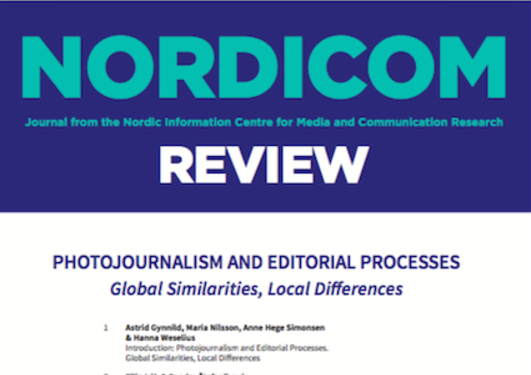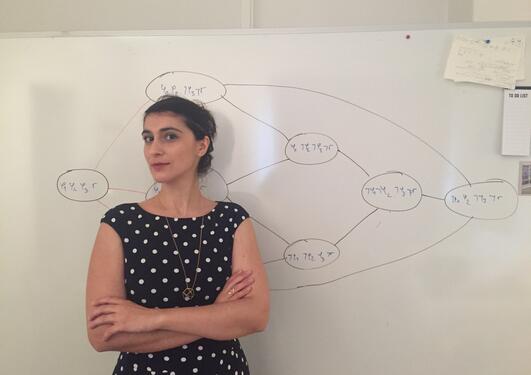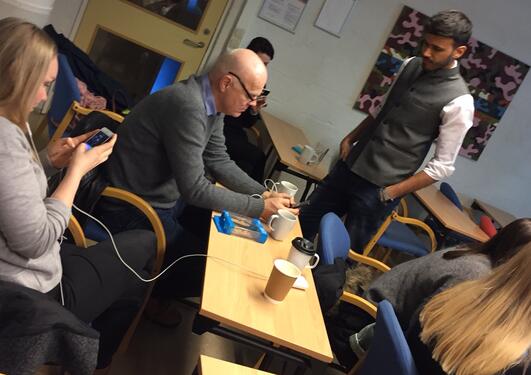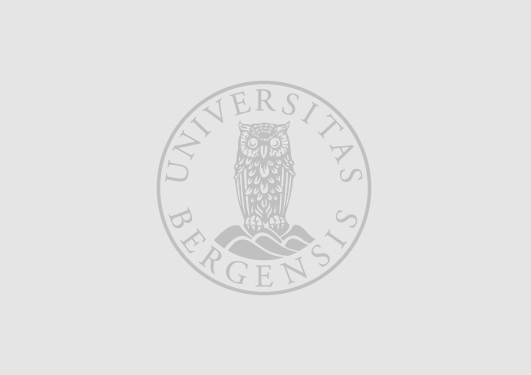News archive for Department of Information Science and Media Studies
UiB shows media technology of the future in an open Media City Bergen
Would you like to take all your monitors and screens with you inside your glasses? Or perhaps have your interview automatically transcribed? These students are developing technological prototypes that might prove useful for media people.
Faceless robots are moving into our living rooms. They are clever, but not necessarily nice.
Welcome to the SSIS Easter seminar.
Would you like to do your master´s project with companies such as the streaming service TV 2 Sumo or the media tech company Mediability? This is possible in the media cluster Media City Bergen.
TV 2 awarded a total of NOK 100.000 to master students from the department of Information and Media Science at the University of Bergen (UiB) during a ceremony at Media City Bergen last week. The scholarship is part of their ongoing commitment to supporting new media talents.
Students in the Master in Media and Interaction Design programme at UiB in Media City Bergen presented their artificial speech prototypes. The result is: Robot Buddy, Easysleep, Masebotten and Albert the kitchen assistant.
The rule of building a perfect algorithm translates to a common experience of the real world: If you want something to be beautiful, it must handle complexity.
Fulbright scholar Derek Lackaff is impressed with the facilities at Media City Bergen (MCB) and thinks that international exchange and knowledge-sharing are more important than ever.
Internships at ITV Studios and NRK
What is the role of photojournalists in an age where the news media is flooded with images from other sources? This is one of many questions investigated in a new Special Issue of Nordicom Review. Astrid Gynnild is one of the issues' four editors.
Marija Slavkovik has always been attracted to machines. In fact, she has turned artificial intelligence into the core theme of her research.
Kristine Jørgensen has been appointed professor at the University of Bergen. She is Norway’s first woman to become a professor focusing on computer game studies.
In August, six new and innovative media study programmes are launched in Media City Bergen. Academic Director Ole J. Mjøs looks forward to welcoming new media students to Bergen.
Hallvard Moe was the only media researcher in Norway’s media diversity committee, which submitted its report to the Minister of Culture on 07 March 2017.
With support from the Research Council of Norway, the graphics company Vizrt and the University of Bergen are developing a world-leading tool for online video editing.
The mobile phone has become the journalist's primary tool. New technologies are being integrated in the journalism and new media studies at the University of Bergen.
Pages
- January 2025 (1)
- December 2024 (3)
- November 2024 (2)
- October 2024 (4)
- September 2024 (4)
- August 2024 (2)
- June 2024 (2)
- May 2024 (1)
- April 2024 (1)
- March 2024 (2)
- February 2024 (3)
- January 2024 (5)
- December 2023 (8)
- November 2023 (3)
- October 2023 (3)
- September 2023 (1)
- August 2023 (3)
- June 2023 (4)
- May 2023 (9)
- April 2023 (1)
- February 2023 (3)
- January 2023 (5)
- November 2022 (3)
- October 2022 (2)
- September 2022 (1)
- June 2022 (1)
- March 2022 (6)
- February 2022 (4)
- January 2022 (1)
- December 2021 (4)
- November 2021 (2)
- October 2021 (2)
- September 2021 (2)
- August 2021 (1)
- June 2021 (1)
- April 2021 (2)
- March 2021 (2)
- January 2021 (1)
- December 2020 (3)
- September 2020 (1)
- June 2020 (1)
- May 2020 (4)
- March 2020 (1)
- February 2020 (2)
- January 2020 (1)
- November 2019 (4)
- October 2019 (1)
- June 2019 (3)
- May 2019 (3)
- March 2019 (1)
- February 2019 (1)
- January 2019 (1)
- December 2018 (2)
- November 2018 (2)
- December 2017 (1)
- April 2017 (3)
- March 2017 (1)
- February 2017 (3)
- January 2017 (1)
- June 2015 (1)
- February 2015 (2)
- October 2013 (1)
- September 2013 (1)
- May 2013 (1)
- April 2012 (2)
- March 2012 (1)
- December 2009 (1)
